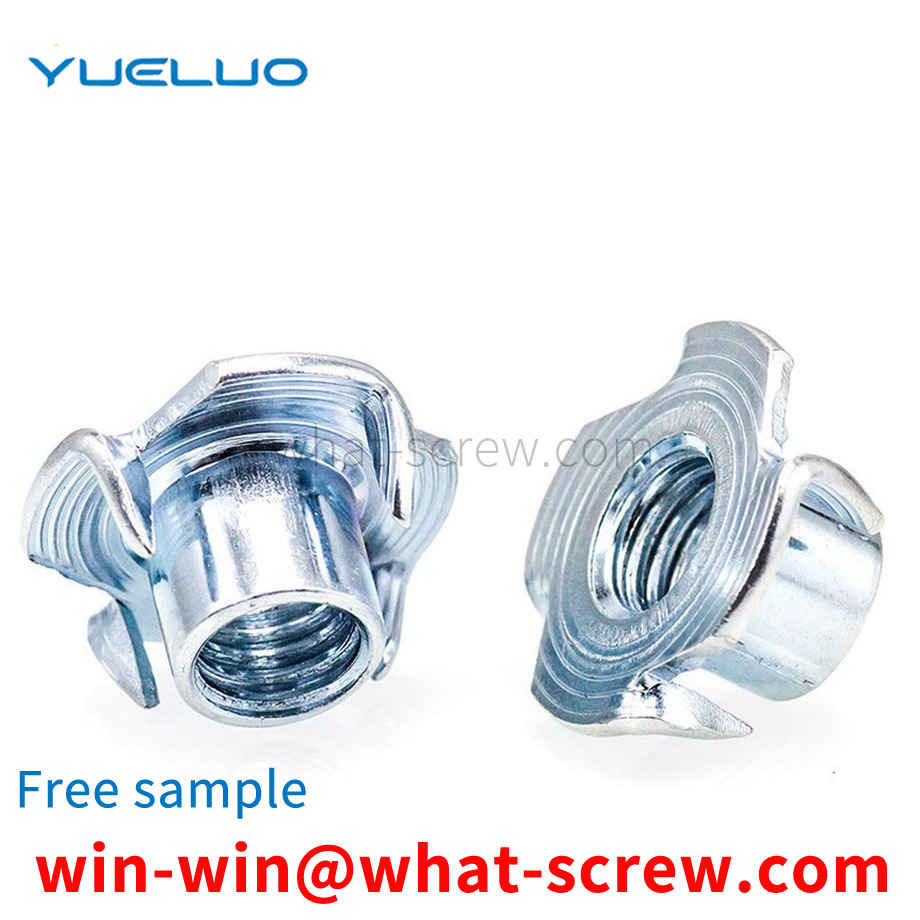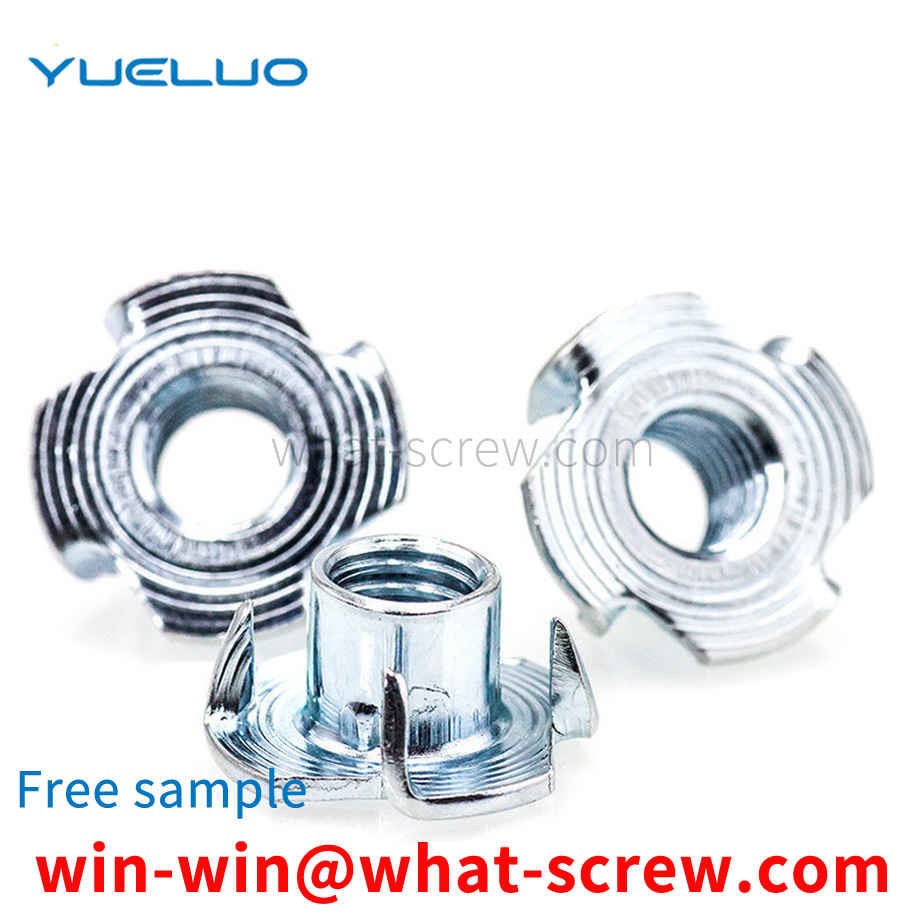At present, the commonly used locking structure is a split pin (hereinafter referred to as a cotter pin type adjustment nut) or knocking the sheet on the adjustment nut into the steering knuckle groove (hereinafter referred to as a sheet type adjustment nut), these two structures are mainly used in single row Bearings are barely used in bearing units and hub bearing units. The former has a complicated structure and the cotter pin is easy to fall off; the latter requires workers to control the press-in force. Too much pressure can easily lead to the cracking of the sheet structure on the adjusting nut, and too little pressure can easily make the adjusting nut failure, and is impacted in the axial direction.
Bolts or screws and flat washers assemblies GB/T 9074.1-2002 Cross recessed head screws and external serrated lock washers assemblies GB 9074.2-88 Cross recessed pan head screws and spring washers assemblies GB 9074.3-88 Cross recessed pan head screws, springs Washer and flat washer assembly GB 9074.4-88 Cross recessed small pan head screw and flat washer assembly GB 9074.5-88 Cross recessed small pan head screw and large washer assembly GB 9074.6-88 [1] Cross recessed small pan head screw and spring washer Assembly GB 9074.7-88 Cross recessed pan head screw, spring washer and flat washer assembly GB 9074.8-88 Cross recessed countersunk head screw and conical lock washer assembly GB 9074.9-88 Cross recessed countersunk head screw and conical lock Tight washer assembly GB 9074.10-88 Cross groove hexagon head bolt and flat washer assembly GB 9074.11-88 Cross groove hexagon head bolt and spring washer assembly GB 9074.12-88 Cross groove hexagon head bolt, spring washer and flat Washer assembly GB9074.13-88 Hexagon head bolt and spring washer assembly GB 9074.15-88 Hexagon head bolt and external serrated lock washer assembly GB 9074.16-88 Hexagon head bolt, spring washer and flat washer assembly GB 9074.17-88 From Tapping screw and flat washer assembly GB /T 9074.18-2002 Cross recessed hexagon head self-tapping screw and flat washer assembly GB 9074.20-88 Cross recessed hexagonal head self-tapping screw and large washer assembly GB 9074.21-88 For assembly Spring Washers GB 9074.26-88 External Serrated Lock Washers for Assemblies GB 9074.27-88 Conical Lock Washers for Assemblies GB 9074.28-88.
Hex cap screw and Hex bolt Hex bolt As the name suggests, it is a male threaded fastener with a hexagonal head, designed to be turned with a wrench. According to the ASME B18.2.1 standard, the head height and shank length tolerance of the hexagon head screw (Hex cap screw) is smaller than that of the general large hexagon bolt (Hex bolt), so ASME B18.2.1 hexagon screw is suitable for installation in all hexagon bolts that can be used. places, also including places where the large hex bolts are too large to be used. The screw head of the hexagon socket screw is round on the outside, and the middle is a concave hexagon, and the hexagon screw is the kind of common hexagonal screw head. The hexagon socket head screwdriver looks like a '7'. Cut two sections of a hexagonal steel bar and bend it at 90 degrees to form a hexagon socket head screw wrench, which is sold in hardware tool stores. Hexagon socket screwdrivers are not so-called mobile phone special screwdrivers. Mobile phone special screwdrivers can be bought at the booths that sell repair tools in the electronics market. Hexagon socket head cap screws are often used in machinery, mainly because they are easy to fasten, disassemble, and not easy to slip. The Allen wrench is generally a 90° bend. One end of the bend is long and one side is short. When using the short side to drive screws, holding the long side can save a lot of force and tighten the screws better. The long end has a round head (a hexagonal cylinder is similar to a sphere) and a flat head. The round head can be easily slanted and disassembled, and some parts that are inconvenient to lower the wrench can be installed. The manufacturing cost of the outer hexagon is much lower than that of the inner hexagon. Its advantages are that the screw head (the force position of the wrench) is thinner than the inner hexagon, and some places cannot be replaced by the inner hexagon. In addition, machines with low cost, low power strength and low precision requirements use much less hexagon socket screws than external hexagon screws. [1] Socket cap screw, also known as socket head screw or Allen bolt, is a screw with a hexagonal inner hole on the head, with a hexagonal ruler (hex key, Allen wrench or Allen key) Tighten or loosen only after inserting into the inner hole. The most commonly used hexagon socket head screws are cylindrical head screws with a head diameter of about 1.5 times the main diameter of the thread (1960 series). Countersunk head cap screw. The countersunk hole design allows the screw head to be rotated without being exposed on the surface of the fixed object, so it is mostly used in places where the surface is small and it is inconvenient for traditional wrenches to use.
However, Yueluo still feels that there should be room for improvement for the screw improvement and screw that integrates stability, labor, fast and multi-function in the above two cases; for example, No. 556784 screw improvement Although the rod has the function of cutting and collecting chips, when the screw starts to screw into the object such as wood, it is hindered by the hardness of the object's tissue, so the staff still needs to exert considerable force, resulting in the lock. In the solid operation, there is still a lack of difficulty in screw-in operation; another example, new cases such as No. 289417 screw that integrates locking, stability, labor-saving, fast and multi-function, although the rod has the structural function of cutting and chip removal, it is The rod part is screwed into the middle section to the rear section of the object. Since the debris cannot be discharged, the rod part pushes the outer part of the object to the surrounding tissue of the object, so that the object expands outwards and even seriously damages the appearance of the object.
The embossing wheel is used to press the mesh pattern (rolling mesh pattern), and the middle is slotted. After milling, the thread still guarantees 6H accuracy. This knurled copper nut is used in power tools, which is different from other knurled copper nuts. The diamond pattern of this knurled copper nut is located in the middle section of the product, and the diamond-shaped mesh knurling wheel rolls the diamond-shaped flower along the large outer circular step surface.
We have many years of experience in the production and sales of screws, nuts, flat washers, etc. The main products are: GB91 cotter pins, iron-plated zinc-plated screws, DIN582, hot-dip galvanized hexagon nuts and other products, we can provide you with fasteners suitable for you solution.



















 Service Hotline
Service Hotline




